The nutritional properties of flour mirror those of the cereal from which they come. However, the processing technology can slightly affect the energy intake and nutrient content which therefore vary between different types of flour. Italian type 00 and 0 flours (white plain flour) provide 340 calories per 100 g. Wholemeal flours and type 1 and 2 flours (bread flours) provide 319 calories per 100 g.
Chemical composition and energy values of different types of flour (per 100g- edible).
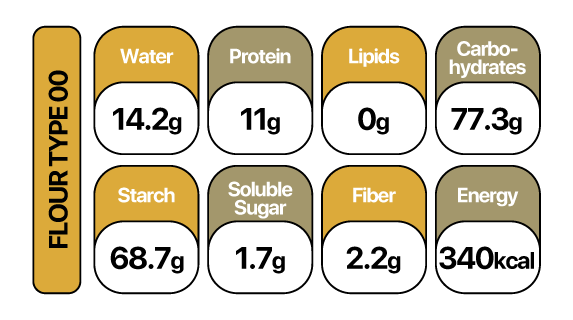
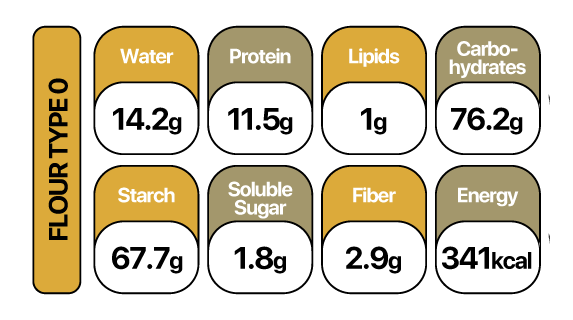
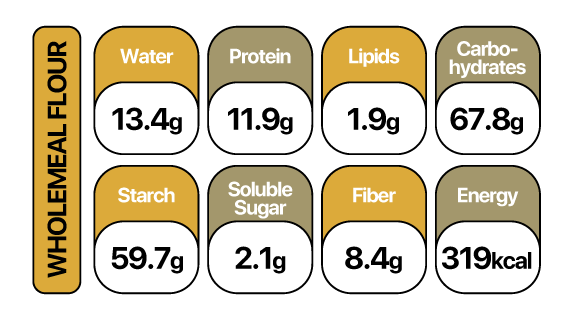
The energy of flours derives mainly from complex carbohydrates: 100 g of flour contains 77 g of which only 1.7% in the form of sugars. Flours can therefore be considered a fundamental element of our diet. Carbohydrates are “essential” nutrients for our health; in a balanced diet 55%-60% of daily calories should come from carbohydrates of which 90% in the form of complex carbohydrates such as starches. Flours and flour-based foods (such as bread and baked goods) are rich in complex carbohydrates which are slowly absorbed. The body transforms them into glucose which it uses to supply energy to all organs and systems, in particular to the cells of the muscular system, the nervous system and red blood cells.
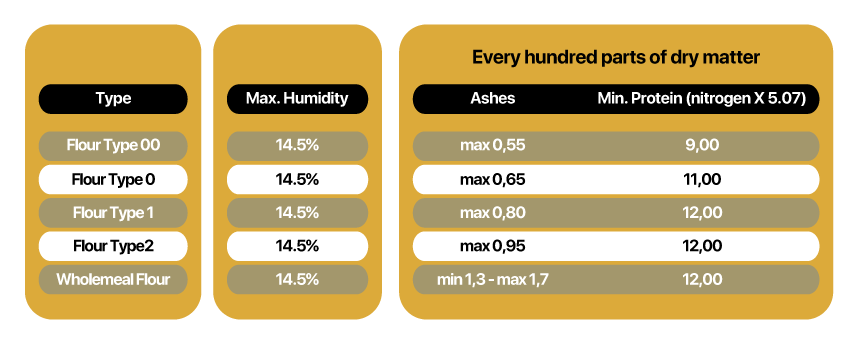
Flours are also a good source of vegetable protein: 11 g per 100 g. The quantity of lipids or fats present in the flour is very low and of excellent nutritional quality: 0.7 g per 100 g.
The content of vitamins, mineral salts and dietary fibre varies; their concentration is higher in wholemeal and type 2 and 1 flours. For example, the niacin content varies from 5 mg per 100 grams in wholemeal flours to 1.20 mg per 100 grams in type 0 flour and 1 mg per 100 grams in type 00 flour. Thiamine (vitamin B1) is present in quantities of 0.40 mg per 100 g of wholemeal flour and only 0.25 mg in type 0 flour and 0.10 mg in type 00 flour.
The potassium content is excellent in wholemeal flour (337 mg/100 g), while it is less than half in type 0 flour (140 mg / 100 g) and type 00 flour (126 mg/100 g).
The calcium intake is higher in wholemeal flours (28 mg per 100 g) and is less in type 0 flour (18 mg per 100 g) and type 00 flour (17 mg per 100 g). The iron content is good in wholemeal flours (3 mg per 100 g) but is more than a third less in type 0 flour (0.9 mg per 100 g) and type 00 flour (0.7 mg per 100 g).
Wholemeal flours have a high fiber content: 8.4 g per 100 g, whereas in type 0 flour it is only 2.9 g per 100 g and 2.2 g in type 00 flour.
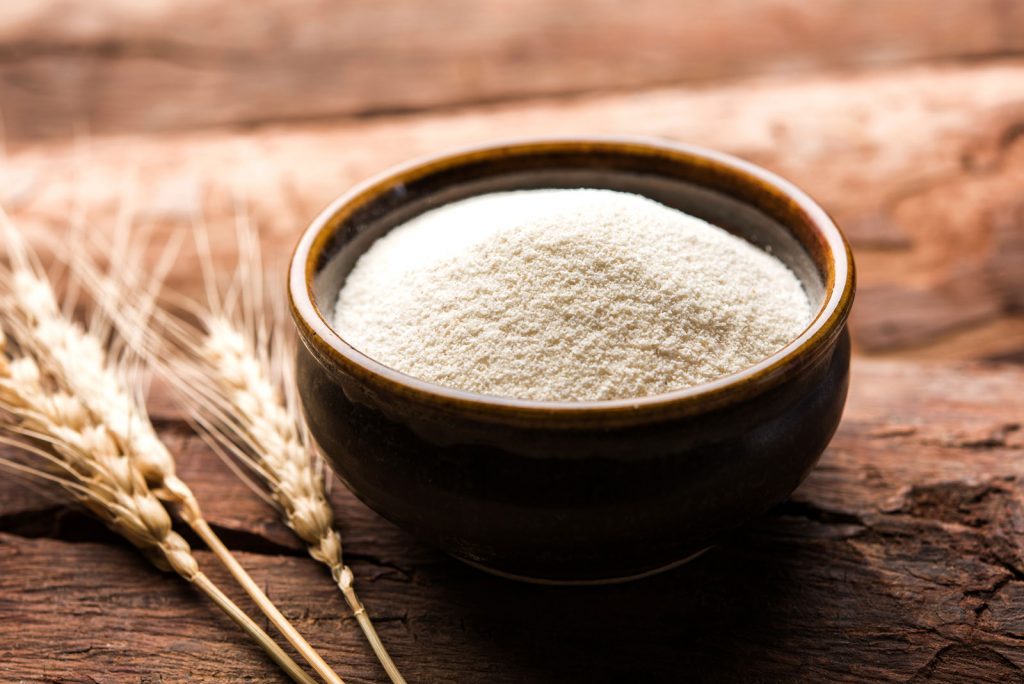
Semolina is much richer than wheat flour in protein as well as vitamins than wheat flour. In addition, whole wheat semolina, is richer in fiber.
Semolina contains carotenoids such as lutein and beta-carotene which are natural antioxidants, great for preventing cellular aging. In addition, semolina is recommended by doctors because it has a low glycemic index. So, it is suitable flour for those who suffer from high blood sugar or cholesterol.
100 grams of wheat flour brings about 314 Calories and contains approximately: 12.5 g of water, 12.9 g of proteins, 2.8 g of lipids, 63 g of carbohydrates, 54 g of starch, 3.2 g of sugars, 3.,6 g of fiber, 120 mg of magnesium, 0.07 mg of zinc, 0.06 mg of copper, and 2.3 µg of selenium.
